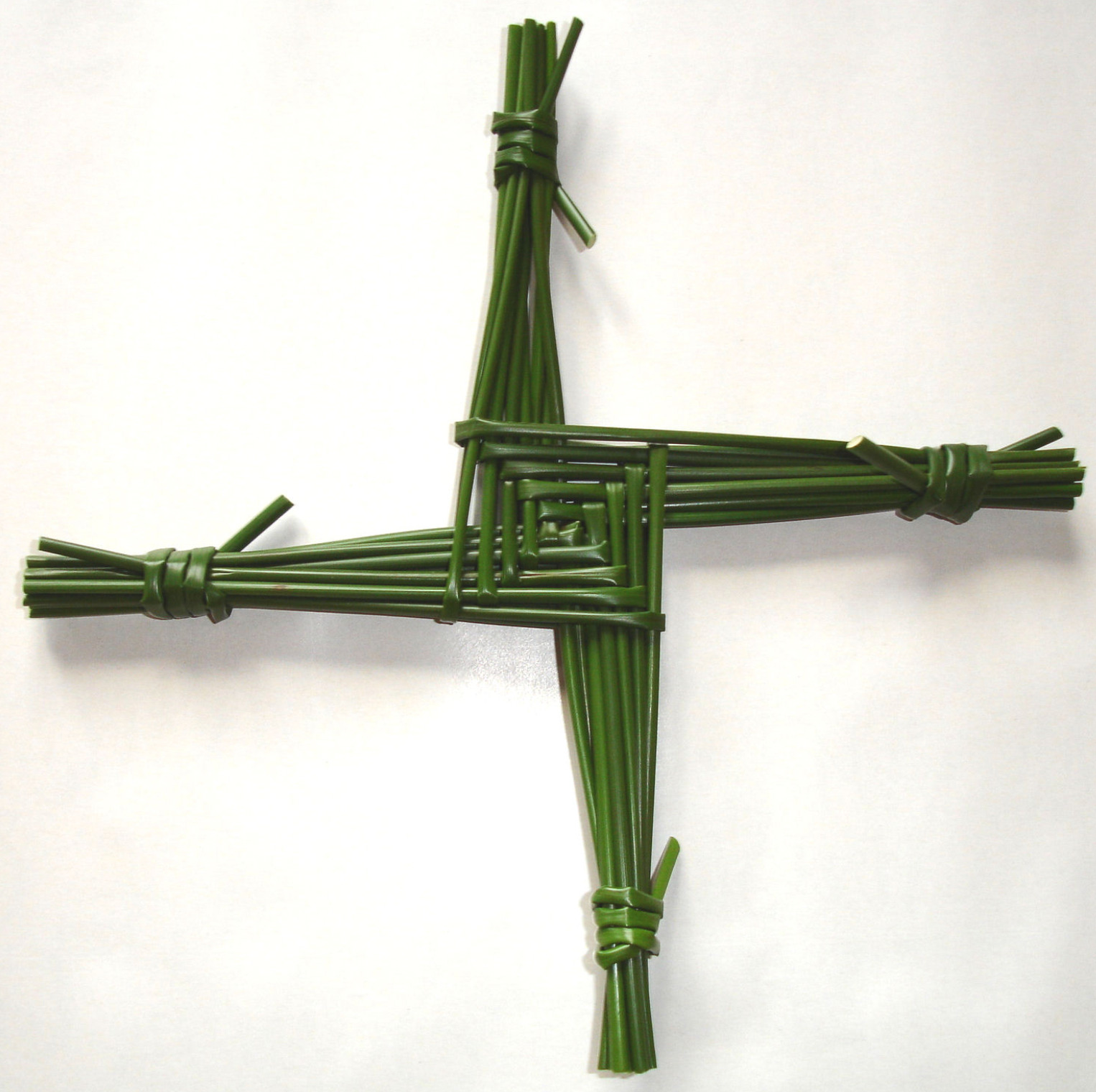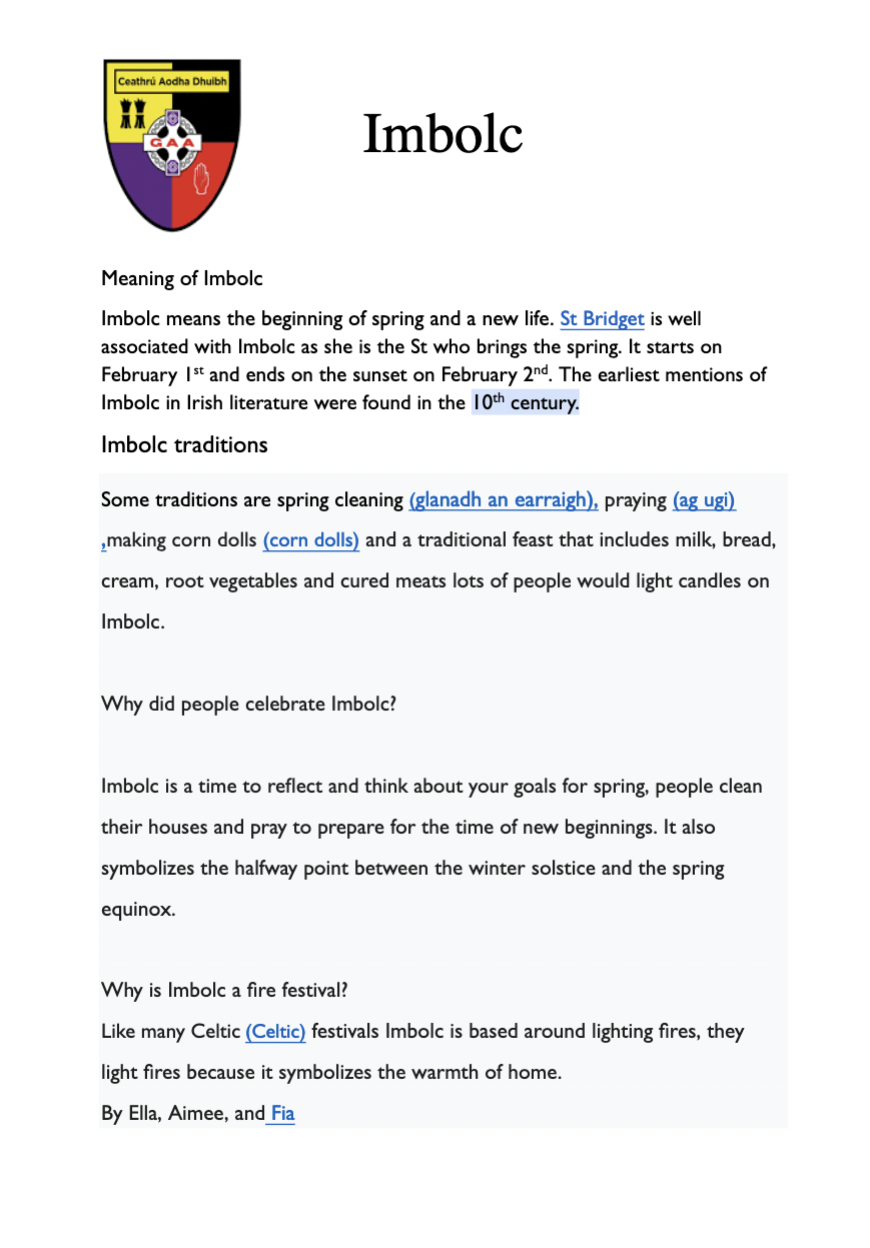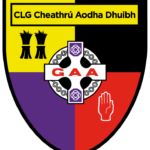We’re delighted to launch our Imbolc page, produced in conjunction with Miss Campbell’s and Mr Burns’ 2023/2024 P7 pupils, from St Joseph’s Primary School in Carryduff. Just click on the word before the 👂, to hear how it’s pronounced in Irish. This “Four Seasons Project” was funded through an Ultach Fund grant to Carryduff GAC.
If you’d like to hear our Primary School children Ella, Fia and Aimee telling you about Samhain, just click on the👂 below.
Imbolc, an Irish Festival (👂).
Meaning of Imbolc
Imbolc means the beginning of spring and a new life. St Bridget is associated with Imbolc as she is the saint who brings the spring. It starts on 1st February (👂 Feabhra ) and ends on the sunset on February 2nd and we mark it on St Brigid’s Day (👂Lá Fhéile Bríde ). The earliest mentions of Imbolc in Irish literature were found in the 10th century.
Imbolc traditions
Some traditions are spring cleaning (glanadh an earraigh 👂), praying (👂urnaí), making corn dolls (👂bábóga) and a traditional feast that includes milk, bread, cream, root vegetables and cured meats lots of people would light candles on Imbolc.
Why did people celebrate Imbolc?
Imbolc is a time to reflect and think about your goals for spring, people clean their houses and pray to prepare for the time of new beginnings. It also symbolizes the halfway point between the winter solstice and the spring equinox.
Why is Imbolc a fire festival?
Like many Celtic (👂Ceilteach) festivals Imbolc is based around lighting fires, they light fires because it symbolizes the warmth of home.
By Ella, Aimee and Fia .
Miss Campbell’s P7 Class (2023/2024),
St Joseph’s Primary School, Carryduff.









